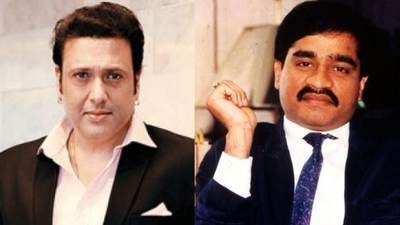Bollywood in the 1990s was a glittering world under a shadow. Behind the success of hit films and celebrated stars, the underworld wielded considerable influence, directing the choices of producers, directors, and actors alike. Filmmakers who sought to portray the gritty realities of crime on screen, such as with ‘Satya’ and ‘Company’, were often unknowingly navigating a network financed by gangsters.According to former Joint CP Crime Mumbai D Sivanandhan, this era was defined as much by fear as by creativity, with the underworld quietly pulling the strings behind the glamour.
D Sivanandhan recalls gangster film funding
In a conversation with ANI, Sivanandhan revealed, “Films like ‘Satya’, ‘Company’, ‘Daddy’, ‘Shootout At Wadala’, ‘Shootout At Lokhandwala’ were made to lift the image of the gangsters. They were all funded and financed by them only.”
He further added that even films from the 1970s, such as ‘Deewaar’ and ‘Muqaddar Ka Sikandar’, were similarly financed by the underworld. Sivanandhan also noted that Mohanlal’s character in ‘Company’ was modelled after him, highlighting the intertwining of law enforcement and cinematic depictions of crime.
Gangsters reportedly dictated celebrities
Sivanandhan explained that underworld financiers exercised total control over actors whenever they funded films. “Dawood Ibrahim could summon all the cinema actresses to Dubai and give them rewards and send them back,” he said.He also recalled witnessing “one of the top most actors along with 83 other musicians and actors, who went to Dubai to do an entertainment show for the daughter of Dawood Ibrahim. I saw them going on a special flight and coming back.”During this period, actors could not refuse such demands. Sivanandhan admitted, “They (the actors) had no choice (of saying no) and we had no means of protecting them. Let me admit that. We didn’t take action against them.”
Actor Govinda confessed to performing under coercion
Even leading stars were not exempt from the pressure. Sivanandhan shared, “Actor Govinda admitted, ‘Hum kya karein? Jaake naach ke aayein hai (What can we do? We had to go and dance). We didn’t take any action.”Producers lived under constant threat as well. “Producers were under mortal fear and felt they could be eliminated. Remember Gulshan Kumar?” Sivanandhan recalled. The T-Series founder was murdered, reportedly at the hands of the underworld.
Film financing often relied on gangster loans
During that time, the film industry did not have formal recognition or status. Producers struggled to raise legitimate funds and frequently turned to the underworld for loans, often at interest rates of 60–80 per cent. Sivanandhan explained, “If they didn’t give that, hell would break loose on the fellow who is a defaulter.”He noted that the police interventions gradually transformed the situation, “That status changed because of the operations we did. We opened it up.”
Police actions ultimately reshaped the industry
The 1990s remain a defining chapter in Bollywood history, illustrating the tension between creativity and coercion. While today Bollywood operates in a safer environment, this era serves as a stark reminder of the shadows behind its glamour.

